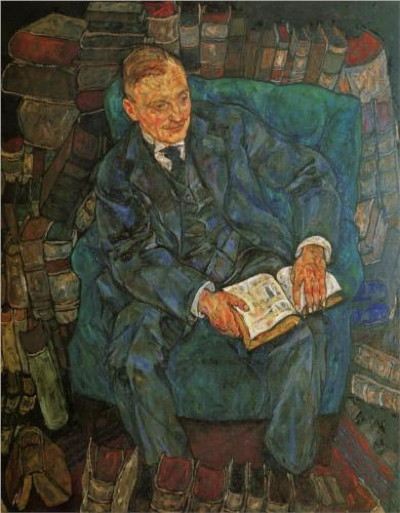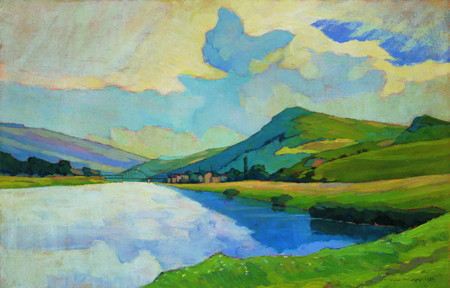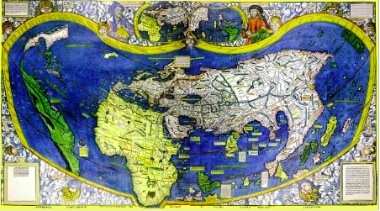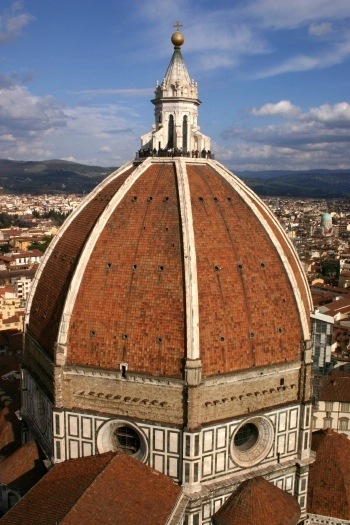From “After the Gold Rush”
Neil Young
Making Sense
“Buster Keaton reading”
Unknown
http://books0977.tumblr.com/image/35735549706
Helen Vendler reflected recently, “Writers and Artists at Harvard,” on what a university, Harvard specifically but the shoe fits many other institutions as well, should consider when considering which students to admit to the college. The most desired students tend to be those with the best transcripts and the greatest potential to become the next leaders of the free world. By these criteria the next generation of top lawyers, doctors, economists and the like are the most sought after because these are most likely to become the leaders of tomorrow. But what lasting impact will the leaders of tomorrow have on the world they come to lead; how many of the leaders of tomorrow will become the yardstick by which the world they leave to their heirs will be measured. She considers the Harvard graduates of the past century that still have an impact on the world today. Most of them are poets, T. S. Eliot, Wallace Stevens, and e. e. Cummings. The article also points out that these poets that went on to have such an impact on our culture, were not shoe-ins for admittance and only got in due to special circumstances and that were they to apply today may not have been admitted at all. She also points out that they made their living doing the kinds of things Harvard often prepares their graduates to do, help run the wheels of commerce.
Prof. Vendler goes on to ask if anyone would remember the siege of Troy if Homer had not written about it or if anyone would remember Guernica if Picasso hadn’t painted it? She suggests the further away we get from current events the less likely those events will be remembered and those that are remembered might be remembered more because of the use writers, painters, and musicians of the day made of them than for the events themselves. There was also a recent article on Alexander Von Humboldt, “Humboldt in the New World,” a German scientist, who collaborated with a Frenchman, and traveled on a Spanish passport. He wanted to be among the greatest scientists of his day, and his ability with language (and with languages) helped him to largely succeed. He made some important discoveries, but it was his ability to write about these discoveries that got him attention. There is an irony that many of his ideas have been superseded by the science of our day, but, like Freud, because of the power of his language there is still an interest in reading him. In Humboldt’s case the stories that surround the getting of the science are adventure stories in their own right even if there were no science involved.
The song, “After the Gold Rush” reflects on what stays with us as we look back. One review of the record when it was first released suggested that the title alludes to Young’s departure from Crosby, Stills, Nash, and Young (or such is my memory of Robert Hilburn’s review in the Los Angeles Times) implying that now Young had “gotten the gold” he could do more of what he preferred doing. Personally I have some doubts about this, because Young seems to value the work he did with the group, but if true the story underscores Vendler’s thesis that there are more important things than chasing gold and many of those more important things will be remembered long after the gold has been squandered.
The photograph of Buster Keaton suggests a number of things to me. First, that artists in one media appreciate the work of artists in other media (though, of course, Keaton could be reading anything and even though the book is a thick one and in hard covers, it isn’t necessarily a quality publication). But art also provokes reflection and it is clear that Keaton is thinking about something, though again that something may not be found in the book. The photograph also reminds me of how often paintings and photographs capture people in the act of reading. I do not know the statistics on this, only that in the anecdotal evidence of my experience this is a very common theme. Reading a book sends a certain message to others about how we see ourselves, and being photographed in that experience enables that message to speak, potentially, to a larger audience. There was a recent article by Joseph Epstein, “You Are What You Read,” that suggests what we read speaks volumes about who we are as people. The essay is a review of a book on Proust that sees Proust’s large book as being largely about people who read and want to be seen reading. We are told that reading is falling out of fashion and that the book as an art form is in decline. Perhaps this is true and the paintings of the future will focus on other things. But when in the future the history of our day is written, who will most likely need a footnote to explain themselves, the bond trader and market managers that make us prosperous or the artists that at least attempt to make us wise. Socrates does not need a footnote, but those that condemned him do, as they are almost universally forgotten, their names at any rate are forgotten even if because of Socrates their actions are remembered.
“Boy Sits amid the Ruins of a London Bookshop”
AP Photo
http://books0977.tumblr.com/image/25265245067
The photographs above and below are of London during World War II and the German blitz of the city. They suggest the importance that books hold on the human imagination. A boy is reading a book in the ruble. Why in the ruble? Perhaps if he were to take it home he would be seen as a looter and there may be consequences for looting. But the book seems to be important to the boy and where he reads that book does not look very comfortable. Though the bombing of London during the war terrorized the people, that terror did not totally subdue curiosity or the life of the imagination. The photograph below is of men scanning the shelves of a bombed out library. Again the books have captured their attention and it is not likely, though certainly possible, that these men are only interested in reading for information, in just finding stuff out. Graham Greene in his novel The Human Factor mentions that during the war many in England returned to the books of Anthony Trollope because they wanted to escape into an earlier age when things were simpler and more peaceful, or at least appeared to be simpler and more peaceful. I imagine Greene had the Barsetshire type books more in mind than the Palliser ones, but perhaps not.
“Library in London just after the Blitz”
Found in: Under Siege: Literary Life in London 1939-45 by Robert Hewison. It has the photo on the cover and also inside. It is apparently the Holland House library in 1941.
http://www.skyscrapercity.com/showthread.php?p=35388454
and
http://thestack.wordpress.com/
Books, paintings, music, film and the other arts have the ability to renew and invigorate the spirit, even if they cannot change our circumstances. Nations are often more concerned with preserving their cultural heritage than in preserving the nation’s wealth. Great sums of money have been spent on libraries and schools, and museums that might have been put to other uses or saved for a rainy day. But it is often this cultural heritage that people are most proud of and contributes most significantly to their national identity. The English people, for the most part, revere Jonathan Swift more than any of the leaders he mocked and ridiculed. It puzzles me that those that oversee the nation’s schools work so hard to remove the arts from its curriculum to give more space to the sifting of information, much of which will change dramatically in the lifetimes of those that are being set to work studying this information.
There are those that suggest it is more important to study the narrative structure of a story, to find out how the story was built, to glean the stylistic information that it offers, than it is to understand what the story has to say about the human condition. This is not to say there is no value to this kind of study. There are those that study the geology of historical sites, “Looking at the Battle of Gettysburg Through Robert E. Lee’s Eyes,” to better understand the history that took place on those sites, to better understand the “story” of history. So also the study of structure and style reveals something of the geology of a story and tells us something about how the story that is told is effectively told. But just as it is the history that provokes the geological study of the battlefield at Gettysburg, it is the quality and durability of the story that is told that provokes the study of its architecture and the study of the architecture should not take the place of the study of the story itself and the qualities of the story that have caused it to endure. Dante’s Divine Comedy can be read to gather information about medieval religious practices in Italy and attitudes towards famous families, but why would people value it so highly for so long if it were little more than a local newspaper along the lines of the National Enquirer. By the same token it is not the geology of the “seven storey mountain” that gives life to Dante’s story but the story that provokes interest in the mountain.
Portrait of Dr. Hugo Koller
Egon Schiele
http://www.wikipaintings.org/en/egon-schiele/portrait-of-dr-hugo-koller-1918
The United States has given to the world some marvelous technologies. However, the wisdom with which these technologies are used will be the product of other contributions, not just from America. The arts cultivate reflection and it is often reflection that is wanting in the uses to which we put our technologies. One of the first films made in America (another of the nations great contributions to the world) was Thomas Alva Edison’s retelling of Mary Shelley’s novel Frankenstein. The film has many problems, not all of which are technological, but it is fitting that this early use of a new technology tells a story about the dangers of embracing too rashly new technologies. Victor Frankenstein would have been happier had he contemplated the consequences of his actions before he acted, instead of regretting them afterwards. The arts often invite us to consider what truly makes us happy, and not just ourselves happy, but those around us as well. What I do has consequences not only for me, but for others who come into contact with me and not just with me but with my influence; with those people whose behavior has in some form been shaped by my behavior. In this respect Victor Frankenstein’s influence, in the form of the creature, is the most harmful. It might also be worth considering who would have the easier time getting into a modern university, Victor Frankenstein or Mary Shelley? It is interesting that Victor’s problem was not that he did not read, but that he read the wrong books. I enjoy the painting of Dr. Hugo Koller surrounded by his books and I hope that, unlike Dr. Frankenstein, these books are the right books.
4 Lessons in Creativity
Julie Burstein
TED Talks
The film clip is about creativity and teaching and nurturing creativity. I am skeptical of this type study because it often focuses on the wrong things. It is easier to teach a student how to understand what it is in a painting, a book, or a piece of music that makes that work great than it is to teach students how to do great work. But this is study that focuses on the past, on what has been done and does not necessarily help us to understand how we might become more creative. As Ezra Pound said, we need “to make it new” and not remake the old. The video touches on this when Julie Burstein talks about the sculptor Richard Serra. Stravinsky challenged his age with Rites of Spring. We are not as challenged by this music because we have learned how to listen to it, and it is important that we listen. But knowing how to hear this music does not guarantee we can go on to create a music that speaks as forcefully to our own age. I marvel that Stravinsky’s first audience rioted, as did the first audiences for the playwrights, John Millington Synge and Sean O’Casey. I do not mean to suggest that riots are a good thing, but I do think it is important that the “raw nerve” of the age be exposed somewhat and because nerves are what they are, this exposure should cause a bit of tension.
“The Moselle near Schengen at the Drailännereck”
Nico Klopp
http://en.wikipedia.org/wiki/File:Klopp_Moselle_near_Schengen.jpg
For me the most sublime image in the video was a photograph of toy cars and trucks caked in dirt on the floor of a room in the World Trade Center after 9/11. It is sublime because of the story it tells. When I saw the picture I choked up and wept a bit. I could not see the toys without being reminded of the children that played with them and what happened to those children as they played. The story of the photograph is a story of good and evil, it could find a place in the Household Tales of the Brothers Grimm. The photograph is the product of a false sense of security and a lack of imagination. Literature and the arts foster hope, encouragement, and tenacity in those that study them seriously, they give us what facts cannot. But they also make us aware of the world in which we live, that there are those in the world that want to do us harm and that we need to be watchful. The greatest failing of the father of Hansel and Gretel was not his indifference towards his children, but his failure to warn them about the witch that lived in the woods. Like the painting above, the world often looks beautiful and inviting. But as in the painting below, there is often a shadow over the world that we do not see, especially on a sunny day.
Silhouette of Klosterneuburg
Egon Schiele
http://www.wikipaintings.org/en/egon-schiele/silhouette-of-klosterneuburg










